Type 1 Thursday – How to treat hypos
Let’s talk about treating hypos/low blood sugars in today’s Type 1 Thursday!
How do you treat your lows? What do you use?
Comments and questions are, as always, welcome!
Transcription
If you prefer to read:
Hello and welcome to Type 1 Thursday with me Hanna Boëthius, one of the cofounders of The Low Carb Universe. And of course, also a type one since 34 years this year. Yay. Let’s celebrate. That’s a question actually for an other T1T about dia-versaries. Do you celebrate your dia-versary? Or do you not? I tend to not really because I don’t really see the point. But let’s keep that for another live.
Today, we are talking about hypoglycemia. And that is, for those who maybe aren’t as in with the diabetes lingo, low blood sugars, so when your blood sugar level drops too low, and you maybe won’t be able to carry on as usual.
Yes, this will also happen, of course, when you are low carb, this is no guard against lows and hypos, but I will tell you this, it will happen less, because of the of course now legendary law of small numbers. Because you’re not adding tons of insulin and tons of sugar, you don’t have the that huge error margin. So you’re playing with small amounts of sugar and small amounts of insulin, so that you don’t ever really dip that low. Anyway, so hypos do happen and they still happen on and off for me.
What has changed for me, of course, from when I was high carb to eating low carb, and therefore took a load of insulin is that the amount of carbs needed to treat a hypoglycemic episode is, of course, a lot less. And I will go through this in a little bit to show you the comparison.
Hypoglycemia has different symptoms, you can be shaky, you can have a bit of brain fog, you can’t really think clearly your vision can go blurry. And you can, there’s so many different things that for example, at times, I’ve had that my nose get goes tingling, or my lip. But now I rarely experience these episodes. And when I do they’re not as low like my blood sugar level is not as low as it maybe it has gone before.
What happens when you have a hypoglycemic episode is that you’ve taken too much insulin, there’s nothing in the world that can cause you to hypo and but actually taking too much insulin for the required thing that you took more insulin than you needed in that in that specific example.
So for example, maybe you took a little too much for the meal that you just had, or maybe because of exercise, you got extra insulin sensitive, there’s so many variables that can make you sort of overdose on insulin, but you know, apart from just shooting up too much. So yes, there are many, many reasons for why but there’s only one sort of correlation as to why you get a hypoglycaemic episode, and that is taking too much insulin for in comparison to your needs. And that’s it.
What I think is very, very interesting, when you do go low carb and high have lower blood sugars than desired is actually that ketones, and this has been proven in some fancy study or another, actually seem to have a cognitive protection for your brain. So even if your your blood sugar is low, and you don’t have enough, well enough, let’s call that sugar in your system, your brain will still function, because it is also fueled by ketones, so it always has fuel rather than relying on only sugar, which is of course, a little bit, well, maybe not ideal. It’s always nice to have double, and fuel sources for your pretty little brain to keep busy with.
What is the definition of a hypoglycemia?
This is something that we can debate forever, because it is very, very individual. So for me, for example, I think the official one is under 3.9 mmol/l, which is about 60 mg/dl, is the lower limit. Anything under that should be treated as a low blood sugar.
According to the conventional method, one should treat hypoglycemia with eating 15 grams of carbs, wait 15 minutes, measure again, and repeat if necessary. That is what it’s taught to all of us diabetics out there. I have figured out that I maybe need something a little bit different than that specific method. But then again, I don’t do things by the book anyway, do I so no surprises there.
Because my carb sensitivity has gone up so much. I’m so sensitive to carbs now because I don’t need them too often. So that’s something I’m happy about. Because in return, my insulin sensitivity has gone up like crazy.
What I usually do is I if I measure a low or if my CGM tells me that I have a low, I will take, listen to this, two grams of glucose. And maybe four grams, if it’s really, really low, and then I will be fine within about half an hour. And because I can keep cognitive for longer, how do I say this without getting into trouble, at relatively low measurements, I can still stay cognitive. And I don’t mind waiting instead of shoving everything in my face, like have done many, many times. When I was high carb, I sometimes needed 25 to 50 carbs to treat a low because I simply had that much insulin swerving around in my system and it being too much for me, of course. So that’s why I needed so many carbs to treat back then. And now I need to for maybe if it’s a really bad one, I will need six grams of glucose.
What is low for me? I don’t generally treat until sort of around the 3.0 mmol/l, about 60 mg/dl. And that also depends on if I’m at home or if I’m out and about. If I’m at home, I can take my time treating it, I don’t have to hurry up and get into a safe zone. But that’s different if I’m out and about, and then I take two grams of glucose, I will minimize the basal on my pump, so that it is at 10 or 20%. So that doesn’t keep giving me insulin during my low as well. That’s usually is enough to get me up to a safe sort of 4.0 mmol/l, so 80 mg/dl to 5.0 mmol/l. And this is where I feel the best as well.
I don’t want to overcorrect it either, because this is not comfortable. This is where the most damage happens to your to your system, with either continuously high blood sugars or jumping blood sugars. I try to avoid that those two things as much as possible, which is why I don’t, or I try not to, over treat my hypos when they do happen, which is not very often anymore. I do not read my kitchen over there to find whatever I want to eat, because this is the opportunity to just eat all these things that I normally can’t, because then I would be over treating it. Anyone who has had a hypoglycemic episode or a low blood sugar knows that it’s a terrible feeling. It’s an absolutely terrible feeling. And your natural instinctive is to just stuff your face with as much food as possible, to be safe, and to be to get your blood sugar into a safe range.
I have relearned this. I actually had a period of my time of my life where I was really really afraid of hypos. So I knowingly kept my blood sugar at a higher rate, which I don’t recommend either, because that didn’t work out, as everything else that I tried back then. What I do now is I keep my calm because I know I have this alternative fuel source that will keep fuelling my brain, which are of course ketones. But if it does happen, and this is not a sponsored post, I pay with my own little cents and dollars for these, I take one or two of these, which I can find in any pharmacy. One of these is 2.2 grams of pure glucose. I take one of these, and then I put my pump on a minimum basal rate. And then I retreat after 25 to 30 minutes, if the level hasn’t changed. I want to show you my favorite flavor as well, which is blueberry yogurt. If you’ve had to use them, you know that the taste of glucose tabs isn’t fantastic, ever. They do taste like chalk. They don’t have very imaginative flavors, but this one is actually the best one out there.
Glucose tablets are just another medicine that I need to actually save my own life at times. So I don’t see it as an opportunity to stuff my face or or treat myself to anything. It’s just another part of medicine that I need to in order to be well. That is how I treat my normal hypos.
I have to touch wood here, I haven’t had hypoglycemia where I need help from other people. in very many years, since I actually started low carbing, those have completely disappeared. Before, it used to be a lot more, as I was playing with a lot of active insulin in my system. And that is sometimes a recipe for disaster. I also have, as I spoke about in the previous episodes, a glucagon kit in the kitchen so that it’s easily easily reachable for my husband, for example, and who is mostly the one who’s here with me, or for myself, if I would really need it. And this could be a case of life and death. This is where the glucagon does so, it activates the liver to push out its extra sugars, and glycogen storage. And that’s how the blood sugar raises itself. Well, not by itself, but how it’s prompted to raise with a glucagon kit. And those are always good to have around, because you never know how you’re going to react to something. In case something isn’t going to plan, then it’s good to have one of those. And you can actually, which is in emergency cases, you can also micro dose these. So for example, if you have a stomach bug or something and can keep anything down, not even liquids, although going to a hospital is a very good idea if you can’t keep down liquids. GLucagon could be a treatment option then, as well. I also read that they’re working on a nasal glucagon, like a nasal spray to activate the glycogen storage in that way, which I think would be fantastic. Because that mechanism of filling a glucagon kit can be quite intimidating. Luckily, I have drilled this into my husband’s brain, so he would be able to do it in the case of an emergency. But normally, I can do with one or two or maybe three glucotabs if it’s really bad, and I am happy.
As I said, this is not a fun topic because hypoglycemia are very, very, very uncomfortable. And even more so when you are maybe with people who don’t quite understand what is going on. But as long as you know that you can treat your own hypos, then you are pretty much all right to go and enjoy everything.
Anyway, I love that you were here with me today that you’re watching that you are sharing successes, writing all of these things. Thank you so much for the hearts and the likes and loves.
I’ll be back next week with another episode of type one Thursday. I’ll see you then. Bye!

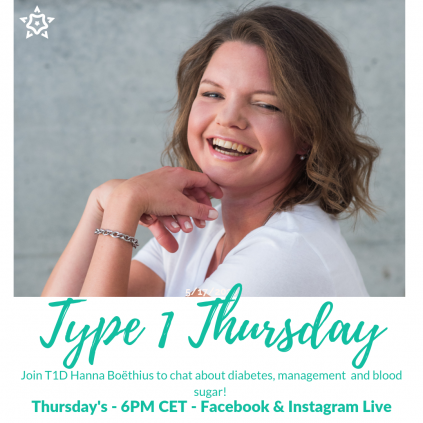
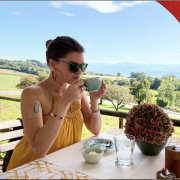
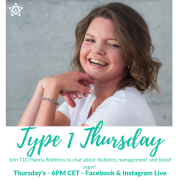
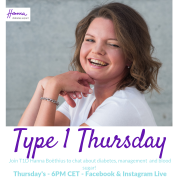
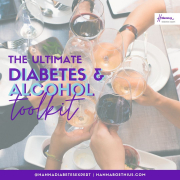
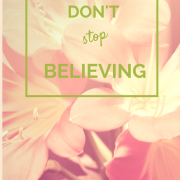
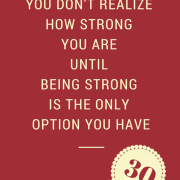
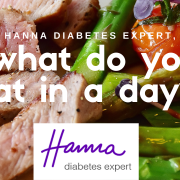

Thanks for Type 1 Thursday’s. It is great to have a resource especially for T1D. I am a T1D Dx in 2001 at age 32. I have been intermittent fasting for about 2 years. Started with 5:2 diet and lost 20kg in 20 weeks.
Then started reasearching more about IF and LCHF.
I have dabbled with LCHF but this month realised this is the way forward for me. Over the past 4 weeks I have been checking and recoding and my average BSL has come down from 8.2 to 6.6 already. I currently do 17/7 most weeks M-F and on the weekend try and fit in a 24 hour fast. I have never felt better.
My endo is happy for me to fast. However he did mention the Bolus/basal should be about 50%/50%.
When LCHF this is not really logical. What are othe Low carbers Basal to bolus ratios?
Thanks again for this great resource.
B
Hey Bionda! Thanks so much for your comment and for sharing a bit of your story with me! That’s absolutely amazing and I couldn’t be happier for you!
Bolus/basal ratio (as well as traditional insulin:carb ratios and basal rates) all go out the window when one removes the carbs. I say do what works for YOU! I, for example, have a bolus/basal ratio of about 20/80, and if I can maintain normal, healthy, stable blood sugars with that, I’m going to continue that way.
Keep up the amazing work! You are an inspiration!
Hanna